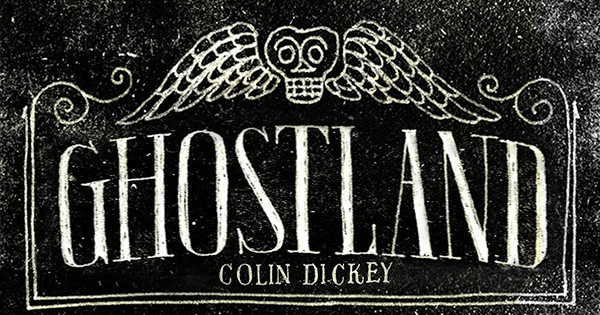
As Halloween approaches, movie theaters across the country are projecting our collective fears on screen: horrific spirits, evil rich people, New England witches, wicked surrogate mothers. These films are the modern incarnation of the ghost stories that we have told ourselves for generations—and often, the most candid expression of the anxieties we’re too afraid to admit to as a society.
That’s the thesis of Ghostland, Colin Dickey’s road trip through America’s most famous haunted places, from the Winchester Mystery House to New Orleans’s French Quarter. “Our country’s ghost stories,” Dickey writes, “are themselves the dreams (or nightmares) of a nation, the Freudian slips of whole communities.”
Ghosts, historian Thomas W. Laqueur writes, are “a representation of the unrepresentable: the dead who were somewhere.” In a world where nearly every moment of our lives is photographed, recorded, and documented, the gaps in the past still beckon us. Searching for ghosts can be an attempt to reconstruct what is lost. By sifting through time for stories that have been misplaced or forgotten, we listen to the voices that call out to be remembered. Our ghost stories center on unfinished endings, broken relationships, things left unexplained. They offer an alternative kind of history, foregrounding what might otherwise be ignored. …
In her study of the ghost stories of the Hudson Valley in New York, Judith Richardson describes how one ghost in particular has changed shape through the decades to suit different needs of different eras. For more than two centuries residents of the village of Leeds have reported seeing a spectral apparition of a ghostly horse galloping down the main road, dragging behind it a young woman. The story, in its most basic form, has to do with a cruel master who wickedly killed a young servant girl as punishment for some minor transgression. When she was invoked by writer Miriam Coles Harris in her 1862 novel, The Sutherlands, the ghostly victim is a slave of African and Native American descent; Harris used her as a parable in the vein of Uncle Tom’s Cabin, castigating not only the institution of slavery but Northern whites for their complicity. In 1896 the same ghost appears in Charles M. Skinner’s Myths and Legends of Our Own Land, but now she is a white European immigrant, reflecting Skinner’s interest in class differences and labor warfare. Contemporary retellings of the story, though, lack these politically charged details; in a 2002 book containing the Leeds legend, for example, the slave’s ethnic heritage is unmentioned and the class divide is downplayed. Her master is indeed cruel and callous, but he’s portrayed nowadays as a singular figure of evil rather than representative of a corrupt ruling class.
Paying attention to the way ghost stories change through the years—and why those changes are made—can tell us a great deal about how we face our fears and anxieties. Even when these stories have a basis in fact and history, there’s often significant embellishment and fabrication before they catch on in our imagination, and teasing out these alterations is key to understanding how ghosts shape our relationship to the past.
We like to view this country as a unified, cohesive whole based on progress, a perpetual refinement of values, and an arc of history bending toward justice—but the prevalence of ghosts suggests otherwise. The ghosts who haunt our woods, our cemeteries, our houses, and our cities appear at moments of anxiety and point to instability in our national and local identities. A ghost story is what Freud called “the return of the repressed,” when something we’d rather forget returns in another form—such as the famous “Freudian slip” (what he himself called a parapraxis), revealing what we’ve hidden deep in our subconscious.
Our country’s ghost stories are themselves the dreams (or nightmares) of a nation, the Freudian slips of whole communities: uncomfortable and unbidden expressions of things we’d assumed were long past and no longer important. If American history is taught to schoolchildren as a series of great, striding benchmarks, the history of America’s ghost stories is one of crimes left unsolved or transgressions we now feel guilty about. They offer explanations for the seemingly inexplicable, address injustices after the fact, and give expression to our unstated desires and fears. They can also, just as easily, mold reality to our preconceived notions and cover over a messy reality in favor of well-worn clichés and urban legends. Ours is a forward-looking country that can have trouble sometimes reckoning with the past and the actions of our ancestors, and the spirit world has become yet another arena in which the shameful chapters in America’s history, including slavery and the genocide of the American Indians, are addressed and relitigated. Uncomfortable truths, buried secrets, disputed accounts: ghost stories arise out of the shadowlands, a response to the ambiguous and poorly understood.
From Ghostland: An American History in Haunted Places by Colin Dickey, published by Viking, an imprint of Penguin Publishing Group, a division of Penguin Random House LLC. Copyright © 2016 by Colin Dickey.


